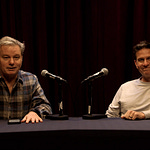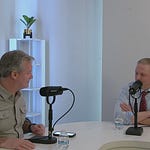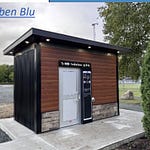Jens Ludwig is a leading scholar on crime and violence. He directs the University of Chicago’s Crime Lab and co-directs its Education Lab, in addition to his role with the National Bureau of Economic Research. Few outside policy circles know his name. We hadn’t either—until Kurt Nelson, co-host of the Behavioral Grooves podcast, pointed us to Ludwig’s recent book, Unforgiving Places: Origins of American Gun Violence
Why We Do What We Do
Behavioral science examines why we act the way we do, and how decisions—often irrational—shape behavior. Our brains default to quick judgments, based on limited information or faulty assumptions. Nelson’s podcast highlights researchers who explore these patterns, showing how small, often unconscious choices can have big consequences.
What drew us to Ludwig’s book is its refusal to rely on rigid ideology. Instead, it looks at data and proposes practical, low-cost solutions to reduce violence. That perspective feels refreshing in Minneapolis, where violence has surged while public debate often stalls. On Friday evening, three people were shot outside the Pantages Theater. Local news coverage lasted about seven seconds. Saturday, a double homicide occurred in the Loring Park neighborhood at Nicollet Avenue and East Grant Street.
Ludwig starts with two assumptions. First, guns are not going away. Despite political rhetoric, bans on assault rifles or high-capacity magazines are unlikely to pass. Second, his focus is not on premeditated crime—such as planned home invasions or gang turf battles. The mass shooting at the Hamoudi Sabri encampment, reportedly linked to Chicago gang disputes over drug-selling territory, falls into that category.
Instead, Ludwig targets the large share of violence triggered by impulsive decisions. A bump in a nightclub or an insult on the street escalates when someone reacts with “lizard brain” thinking. These moments—often no more than ten minutes of poor judgment—can ruin lives. As Nelson noted in our discussion, returning those “worst ten minutes” to people now in prison would change their futures, and those of their victims.
Minneapolis now funds dozens of violence prevention programs. At its most recent meeting, the City Council approved nearly $9 million in contracts for 35 vendors. The scale raises questions: can so many groups deliver consistent, effective services? And how can the city possibly ensure rigorous oversight?
Ludwig’s work suggests useful techniques, especially for younger residents, but success requires vision and discipline. Without it, Minneapolis risks spreading resources thin across a patchwork of organizations with little accountability.
Interview Summary
Kurt Nelson, co-host of the Behavioral Grooves podcast, discusses how behavioral science—drawing from economics, psychology, and neuroscience—explains why people don’t always act rationally. Framed around Jens Ludwig’s book Unforgiving Places: The Unexpected Origins of American Gun Violence, Nelson summarizes Ludwig’s core claim: most gun violence stems less from “evil actors” or pure economics and more from situational, fast, automatic (“System 1”) reactions. Citing Chicago research—such as contrasts between adjacent neighborhoods like Greater Grand Crossing and South Shore with similar gun prevalence but very different homicide rates—he argues environmental context strongly shapes outcomes.
Nelson highlights solutions that focus on the “emotion” side of Ludwig’s equation (emotion + guns = violence). Practical steps include creating “eyes on the street” (active storefronts, porches, foot traffic), better lighting, rapid graffiti abatement, pocket parks on vacant lots, and holding owners of blighted properties accountable—measures that reduce the environmental “priming” toward disorder. He also emphasizes building metacognition and emotional regulation skills, especially for youth, through school curricula, after-school programs, nonprofits, or diversion requirements. Examples include the “Becoming a Man” model and simple exercises that slow impulsive reactions—the idea that taking away or defusing the “ten minutes” when bad decisions occur can prevent many offenses. Police and trained violence interrupters matter as a visible, de-escalatory presence rather than solely punitive force.
Applied to cities like Minneapolis, these are relatively low-cost, scalable interventions that won’t eliminate guns but can meaningfully cut violence—on the order of double-digit reductions. Nelson closes by noting that Behavioral Grooves has passed 500 episodes spanning topics from corporate behavior to polarization, and invites listeners to find the show on major platforms and YouTube, including an upcoming live event featuring University of Chicago professor Nicholas Epley.
The broader takeaway: because people are “predictably irrational,” cities can redesign environments and teach thinking skills to steer split-second choices toward safer outcomes.











